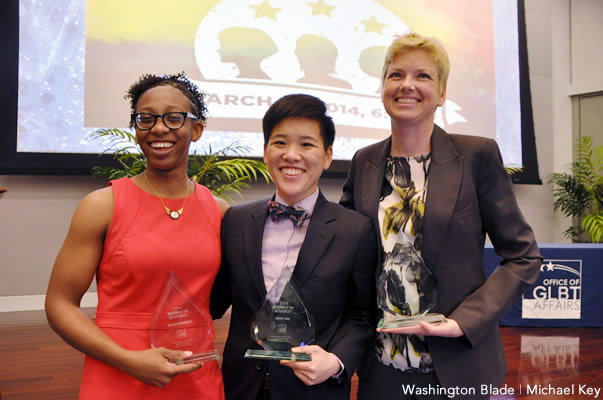homepage news
Pintauro defends comments on oral sex HIV transmission
Former child actor-turned-AIDS-activist honored in D.C.
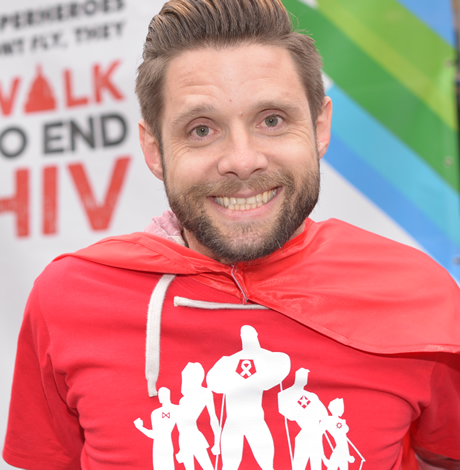
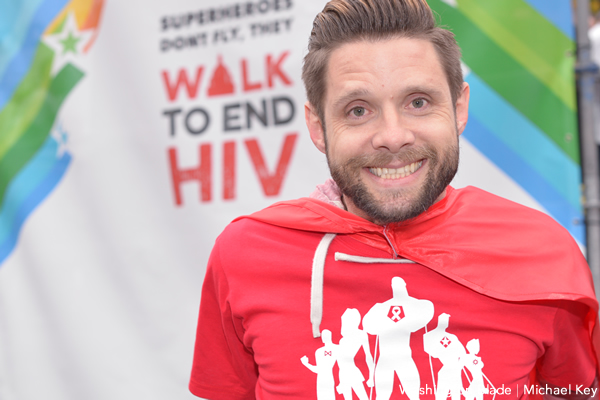
Danny Pintauro says he’s been unfairly criticized by AIDS activists for saying he became infected with HIV through oral sex. (Washington Blade photo by Michael Key)
Former child star Danny Pintauro says he’s been unfairly criticized by some AIDS activists for saying he thinks he became infected with HIV through oral sex, and that his decision to raise the subject has drawn needed attention to HIV prevention efforts.
In an interview with the Washington Blade, Pintauro says he never made a definitive statement that he was certain that oral sex was the means through which he became infected more than 12 years ago.
“Everybody has their own version of the truth. And I’ve since said a couple of things about how I’m not 100 percent sure,” he said, recalling that he has long reflected on his intimate relations with a male partner through whom he believes he became infected.
“You never know,” he said, adding, “I spent the last 12 years sort of trying to figure out what happened that day, and that’s my best guess.”
Pintauro, 39, is well known for his portrayal of Jonathan Bower on ABC’s 1980s sitcom hit, “Who’s The Boss?” He made national headlines when he disclosed just over a month ago on Oprah Winfrey’s “Where Are They Now” show that he was HIV positive and had been addicted to crystal meth.
He has since announced he plans to tour the country to generate a renewed phase of AIDS activism and to deliver to young people his personal message on how he overcame his struggle with crystal meth abuse and how staying away from the drug scene can help people avoid HIV.
Last Saturday, Oct. 24, D.C.’s Whitman-Walker Health presented Pintauro with its annual Courage Award for a person with HIV “who has shown remarkable courage and leadership in the fight against the disease.”
Whitman-Walker Executive Director Don Blanchon presented the award to Pintauro and Atlanta AIDS and women’s rights activist Dazon Dixon Diallo at the conclusion of the organization’s Walk to End HIV, which drew close to 5,000 participants and was expected to raise more than $600,000 for Whitman-Walker’s local AIDS programs.
Pintauro and Diallo were among those who led the annual Walk to End HIV through the streets of downtown Washington.
“When you come out today and you see 5,000 people of all walks of life, the diversity of this great area, you see an expression of hope,” said Blanchon minutes before he presented Pintauro and Diallo with the Courage Awards.
The public response to Pintauro’s disclosure on the Oprah program that he was HIV positive appeared to be overwhelmingly supportive.
But his comment less than a week later on “The View” that he thought he became infected through oral sex drew immediate criticism from a number of AIDS activist bloggers. Among other things, they pointed out that no case of oral transmission of HIV has been scientifically confirmed.
Experts on HIV transmission, including researchers with the U.S. Centers for Disease Control and Prevention, have said transmission through oral sex is theoretically possible but difficult if not impossible to confirm because virtually all of the data they have is based on personal reporting of sexual practices by people infected with HIV.
“Receiving fellatio, giving or receiving cunnilingus, and giving or receiving anilingus carry little to no risk,” the CDC says in a statement on its website. “The highest oral sex risk is to individuals performing fellatio on an HIV-infected man, with ejaculation in the mouth,” the CDC statement says.
The statement adds, “Even though oral sex carries a lower risk of HIV transmission than other sexual activities, the risk is not zero. It is difficult to measure the exact risk because people who practice oral sex may also practice other forms of sex during the same encounter.”
Dr. Raymond Martins, Whitman-Walker’s senior director of clinical training and the organization’s former chief medical officer, said his view based on the voluminous data and scientific studies on HIV transmission that he’s seen is that transmission through oral sex is “extremely unlikely.”
According to Martins, some studies based on patient interviews show that the chance of becoming infected with HIV by performing oral sex is less than one in every 10,000 acts.
He notes that the anatomy of the mouth, unlike the anal canal, has a thicker lining of protective cells, making it much harder for the virus to get close enough to either blood in the mouth or white blood cells in the mouth where the virus could enter.
“And then at the same time, the saliva is protective,” he said. “It doesn’t allow HIV to be as viable.”
Added Martins: “In the anal canal the lining is very thin and so it tears easily and so a lot of times HIV comes in direct contact with blood or with the white blood cells that are directly below the surface.”
Martins and CDC experts have said due to the easier transmission through the anal canal, people engaging in anal intercourse should always use a condom for protection.
Pintauro has said since coming out as HIV positive that he may have had sores in his mouth due to his abuse of crystal meth, which can cause mouth ulcers, and that could have facilitated his becoming infected through oral sex.
Martins said the studies showing that the risk of infection from oral sex with someone who is HIV positive is less than one in 10,000 must have included people who have had abrasions in their mouths.
“It seems not to increase the risk dramatically if at all,” he said, even when ejaculation occurs in the mouth.
Pintauro, while not disputing data showing oral transmission is unlikely, points to the CDC statement saying oral transmission is possible.
“Yeah – the chances are incredibly slim, I admit that,” he told the Blade. “But you’d be surprised about the number of people who contacted me in the last week and a half saying that that’s the same way that they believe they’ve contracted it,” he said.
“And you have to remember that I’m throwing meth into the picture. So any of these statistics are going to change or any of the chances are going to be different when you put in that factor that I’ve been doing that for God knows how many hours,” he said.
Asked if he was surprised by the criticism over his statement about oral transmission, Pintauro said he was not.
“You can’t go into doing something like this and expect to get 100 percent in support,” he said. “But I was a little surprised because the backlash was coming from the people that I wanted to become – these AIDS activists mostly.”
“And I was surprised because I didn’t expect that the negativity would come from within the community,” he said. “I thought if anything it would come from outside the community where stigma is based.”
He said he was also taken aback when some of the AIDS activist critics accused him of being uniformed on HIV transmission and the scientific data on HIV.
“And I’m saying, now wait a minute. Why don’t you go and look at the CDC’s website and look at the fact that they say that it is possible all be it very difficult,” said Pintauro. “I feel like you’re the one who’s uniformed, right?”
Added Pintauro: “But the idea is sort of to get past that and get to the bigger issues and get to the broader topics that we need to focus on. And let’s get there. It’s time to skip that and talk about taking better care of each other.”
Pintauro came out as gay in 1997, a development that also drew widespread coverage in the entertainment media. Last year he and his partner, Will Tabares, were married.
The full transcript of the Blade’s interview with Pintauro follows:
Washington Blade: It has been reported that you have begun a “Beacon of Light” tour to carry out your new role as an AIDS activist since coming out in September as HIV positive. Can you tell a little about that?
Danny Pintauro: I don’t quite know what that means yet. It was sort of a moniker given to me about this year. And I’m definitely excited to turn it into a tour. Right now I’m still just getting through the initial stuff, getting through the initial interviews and media and all that. And then once that settles down I can really focus on finding the things to go to speak at. I will try to go to every Pride that I can around the country and speak and teach and learn and make a difference in any way I can.
Blade: By Pride, do you mean LGBT Pride Day events in different parts of the country? Don’t they take place mostly in June?
Pintauro: Yes, a lot of them are in June but believe it or not there is actually a ton all throughout the year. Some of the smaller ones are in September even. Los Vegas is in early September. They’re all there for Pride and they all want to get involved so I’ll be able to talk to the most people that way I think. We’ll see.
Blade: Where are you based now, Las Vegas?
Pintauro: Yeah, Las Vegas. It’s fine. It’s just Las Vegas. One block off the strip on either side and it turns into suburbia. And it’s very boring – believe it or not.
Blade: It doesn’t have the reputation of being boring.
Pintauro: I know. But you know when you live there its quite boring. And you don’t want to go anywhere near the strip because it’s too expensive.
Blade: Can you tell a little about what prompted you to come out as being HIV positive on the Oprah show? Did you make your decision to do this when her producer called you in advance of the show or did you think about this in advance? How did it come about?
Pintauro: About five or so years ago I was living in L.A. and I thought it was a great time for me to talk about it then. And so my publicist friend and I at the time decided who would be the best person to talk to about this? Who would be the one to treat it right? And we could only decide on Oprah. I mean there was nobody who was going to do it better. So we actually made some steps. We called her show at the time to see if they would be interested. But there was only about five more months of her show left and every episode was full until then. Everyone wanted to be on those last five months.
So it didn’t work out. But I’m ok with that. It wasn’t the right time it turns out. But then cut to April and I get a call from the producers just wanting to do a regular ‘Where are they now?’ Just – he works at PF Chang’s in Los Vegas. My publicist friend said look, this is your chance. They’re coming to you now and you’re never going to have this opportunity again, at least not with Oprah.
So I made the decision to tell them what I would really want to talk about. And they were not expecting that at all, of course. But the producer was like – she said I’m so honored that you want to trust us with this information. Is it alright if I call Oprah and see if she would be excited about it? And I was like, no please, don’t call Oprah. I said of course you can call Oprah and see what she thinks. The next day she called me back and said Oprah is so, so honored and can’t wait to sit down and interview with you in person.
Blade: We now know what happened after you did it. But did it surprise you that although the public reaction appears to be overwhelmingly positive, you created a controversy among some AIDS and LGBT activists over your statement in another interview the following week about how you got infected. Could you call that reaction a backlash?
Pintauro: You can call it that, yeah. I wasn’t surprised. You can’t go into doing something like this and expect it to be a hundred percent in support. You just can’t, especially in the age of the Internet where anybody with a computer can write an article and have it posted somewhere. But I was a little surprised because the backlash was coming from the people that I want to become — these HIV activists mostly. And I was surprised because I didn’t expect that the negativity would come from within the community. I thought if anything it would come from outside of the community where stigma is based. But the fact that it came from within was really surprising.
And it is what it is. Everybody has their own version of the truth. And I’ve since said a couple of things about how I’m not one hundred percent sure – I have no idea. But that’s not the point. The point is when did your doing it wrong become more palatable than I’m sorry – I’m here for you. Let’s get through this. Let’s help you become the great activist that you want to become.
Blade: Do you still think there could be the possibility of becoming infected through oral sex?
Pintauro: Yeah – the chances are incredibly slim. I admit that. But you’d be surprised about the number of people who contacted me in the last week and a half saying that that’s the same way that they believe they’ve contracted it. And you have to remember that I’m throwing meth into the picture. So any of these statistics are going to change or any of the chances are going to be different when you put into that factor that I’ve been doing that for God knows how many hours. And you know, what’s happening in your body and the person you’re with – he’s not on any medication so his viral load is very, very high.
But yeah, it could happen anyway. It could be anything. It could just be that his viral load was so high that our fluids mixed in some other way and that was enough. You never know. But I spent the last 12 years sort of trying to figure out what happened that day, and that’s my best guess.
Blade: The U.S. Centers for Disease Control and Prevention says on its website now that although oral sex carries a much lower risk of HIV transmission than other sexual activities, the risk is not zero.
Pintauro: That’s the funny part to me. These people are trying to say I don’t know what I’m talking about and that I’m not informed. And I’m saying, now wait a minute. Why don’t you go and look at the CDC’s website and look at the fact that they say that it is possible all be it very difficult. I feel like you’re the one who’s uninformed, right? Does that make sense? But the idea is sort of to get past that and get to the bigger issues and get to the broader topics that we need to focus on. And let’s get there. It’s time to just skip that and talk about taking better care of each other.
Blade: Concerning your plans to make public appearances to talk about HIV and HIV prevention, what would you say to young people about your own situation, including your crystal meth problem? Looking back, can you perhaps say what you should have done that you didn’t do?
Pintauro: I think just the fact that meth was involved in the first place is going to make for all kinds of scenarios that don’t have to happen in the first place if you’re not getting into the drug scene. But I’ve been talking to people who had been drinking so much that they blacked out and don’t remember exactly what they did. And I have friends who are not doing drugs and are still that one time getting HIV. It’s a matter of complacency. It’s a matter of making sure people are still doing what they need to do to protect themselves. And I feel like people are doing that less. And it may be because they don’t have a frame of reference for the fear and sort of the scary side of HIV. But we’re also seeing a rise in men over 50 who are also getting HIV. So it’s not just the young kids. I think everybody is taking too many steps back. It’s still a problem. It’s not going to go away. And just because you can take one pill a day doesn’t mean you can throw caution to the wind.
Blade: You’ve talked about your coming out as gay and now coming out as someone who’s HIV positive. How has that impacted your relationship with your family and your parents?
Pintauro: Coming out as gay in 1997 was hard for my parents. You know they didn’t have a lot of frames of reference at the time. PFLAG was barely in existence. They didn’t really have anyone to go to or talk to about what it means. So they had to figure out how to handle it on their own. And I thank them for doing it as well as they did considering the time we were in.
The HIV was no problem at all. By now we’ve got my lovely husband who is in the picture, and they love him. They know that we’re in a sero-discordant relationship so they get that we’re doing what we need to do to take care of ourselves. And for my parents, it was Oprah. Oprah’s involved. How exciting, you know? So they’re just proud of me for making the message and taking it out there. They’re following along. I keep calling and my dad will say like, oh, they’re not getting your messages across in that article you did. So it’s nice to sort of hear them looking for what’s coming next and paying attention.
Blade: With the name Pintauro, are you from Italian American family?
Pintauro: A little bit, yeah. One side is Italian and the other half is Polish, English, Irish, and German. So I’ve got a whole crazy mix of blood going on. But yes, the Pintauro last name is Italian.
Blade: The fact that you and your husband are married makes you a living example of how far the gay rights movement has come with marriage equality nationwide. Have you thought about where the gay and LGBT movement should be going now?
Pintauro: That hits the nail right on the head. And I’ve been saying that a lot lately, which is that we’ve been so focused on becoming socially acceptable and so focused on getting more rights as with marriage and any other sort of health benefits. You name it. We’ve been so focused on it. And we’ve been achieving amazing things and it’s wonderful that we’re achieving these things. But I think in doing that we’ve forgotten about each other a little bit. And we’ve forgotten about taking care of each other. We’re so focused externally. But now I think that we should focus internally again. And we’re really good at rallying as a community, you know? And I think it’s time that we rally within to stop the spread of HIV and make how big of a problem meth is much more apparent in our community. So that is literally where I think we should focus next – is on each other.
Blade: One aspect of the gay movement that has been talked about recently is the Stonewall riots as depicted in the recently released move called Stonewall. As someone who has experience in the film industry, have you had a chance to see it and form an opinion on it?
Pintauro: I haven’t yet, no, I haven’t. I’ve been reading the articles and reading about the controversy. It’s a really fine line because the film maker is so proud of the work. And I have to allow him to be proud of his work and I have to allow him to feel like he’s done a really great thing. I feel everyone is going to have their thoughts on if it was done right or if it was done wrong. But I think I’m also having that happen now. People are saying he isn’t doing it right or you’re not doing it the way we want you to have done it. I’m just happy – the thing I’ve been saying is people are talking. I’m getting people to talk. And I’m getting people to have that conversation again. And so if anything, I think the movie really sort of allowed us to have that conversation again, to remember where we come from. And the number of people – young gay men especially – who had absolutely no idea about Stonewall and what that meant could come across this article –even if it was a bad article. They’re still going to read that article and they’re going to want to learn more. And then they’re either going to see the movie or do some research on Stonewall that brings them back to our history. So whatever the movie is, it’s brought everyone back to our roots and sort of learning about that again. And that’s ok.
Blade: Are you thinking about seeing the movie at some point?
Pintauro: Yeah, sure. There’s just been so much going on I have not had a chance. But yes. For sure — I have to see anything that has to do with our community, especially in a historical sense. So yeah, stay tuned. I’ll post something about my thoughts on it.
Blade: As we approach 2016 the presidential election with all the candidates running, both Republicans and Democrats, do you have any preference among the candidates?
Pintauro: You know if there’s one thing I’ve never ever been very good at its politics. My husband is the politician – or the one who follows all of it. Believe it or not, he and I are both still trying to figure out who we really trust and who we really believe in. I think it’s going to depend a lot on the coming months. I definitely feel like I would trust Hillary in the White House 100 percent. But there are other people who have just as great ideas and opinions and methods for getting things done in the White House. So I’m listening to those. Of course, anybody who’s going to get into the White House and potentially take away my rights or anybody that I care about and love is not somebody who I’d want in the White House. Stay tuned. We’ll have to wait and see.
Blade: It seems that among the Republican presidential candidates, most if not all don’t support LGBT rights.
Pintauro: I mean anyone who expects a Republican to appreciate the gay community or LGBT rights is fooling themselves – at least right now. Look, we may get to a place where a Republican gets into office and they understand the impact that they have on the world and they will take some steps to learn more and to at least come to terms with the fact that the LGBT community exists. I would hope that they would do that. We’ll see.
Blade: Despite all of the existing HIV prevention programs throughout the country, no matter what they do, the new infection rate has remained the same and has not gone down, particularly with young gay men and gay men of color. Do you have any thoughts on what you might say to young gay men who are just coming out?
Pintauro: Yeah, I feel like they just need to learn more about what HIV is and what it means. But it all comes back to getting tested for me. If you don’t feel comfortable enough to get tested because you are afraid to get tested, you don’t want to know the answer, or you don’t want to become that guy who’s got HIV you’re not going to get tested. And that for me is the biggest problem. If everyone got tested and everyone knew their status we would eliminate HIV or new infections altogether because everyone would know. So it’s a matter of getting people to get tested. What you do in your bedroom – obviously I’d like for you to be taking precautions. But if you’re getting regular tests and checkups then at least we’re taking care of that aspect and at least we can hopefully prevent you from passing the virus on to someone else.
I have a close friend in Las Vegas whose partner got incredibly sick and they thought it had something to do with his blood and his heart. Nobody thought to do an HIV test at any point. He didn’t even think to do it. It turns out that he had ten T cells left because he was that far along with HIV that it had become full blown AIDS. And somewhere in that line he passed it on to the boyfriend. If they had both gotten tested long before they could have completed avoided that ever having happened in the first place. Whatever it is they did in the bedroom if they had had those tests in the first place they would already have known and would already have been able to take the precautions they needed to.
Blade: Concerning the crystal meth issue, do you have any advice for young guys who are toying with it and saying oh I can keep it under control and do it as a recreational thing?
Pintauro: It doesn’t work. Meth is not the kind of drug that you will be able to do recreationally. And even if you do your brain chemistry becomes so far off so fast that you still have a lot of recovery to go through. And then there’s that thing that happens too where a lot of the time you’re doing meth and having sex so you’re combing the two and you lose sight of what having sex without meth looks like. And that’s really hard to find again. I take that – that’s from experience for sure. If you don’t want to lose sight of what it feels like to be normal in a sexual environment don’t get into it in the first place. Whether or not it makes you feel invincible or sexy or as dirty as you want to be – not dirty as in dirty dirty but dirty as in dirty dirty – It’s not worth it. It’s just not worth it.
Blade: You mentioned in another interview that you thought there is a linkage between meth use and S&M-bondage practices. Have you gotten any flack for that?
Pintauro: Yeah, I’ve definitely gotten a little flack. And I don’t mean to say that the BDSM community is completely intertwined with crystal meth. In my experience they were always connected. I don’t know if my experience is a separate version or if it’s the norm. It doesn’t matter because the idea is the BDSM community is such a tight community, they take so much good care of each other, they’re so welcoming and accepting that I want them to do more to not welcome meth into that environment. That shouldn’t be a part of that. It’s about all of the other stuff and it’s about being in the moment. You can’t be in the moment in that kind of environment if you’re doing meth.
Blade: A lot of people have talked about your role as a child star in ‘Who’s the Boss?’ But can you tell a little about how you managed around the same age as you were in ‘Who’s the Boss’ when you appeared in the horror movie ‘Cujo,’ where your character was trapped inside a car in a garage with his mother and menaced by a huge monster dog that was killing people left and right?
Pintauro: It was a great movie. It’s got all the suspense. It’s got the actual story content. You actually end up caring for the characters. Nowadays it’s just very like slash and burn and kill. This has got that really nice edge to it. You never know what coming next.
Blade: But as a child actor was it scary for you?
Pintauro: No, no.
Blade: When you’re behind the scenes and in front of the camera it’s more like doing a job?
Pintauro: Yeah – and that’s what takes it away. Like I was acting so well that everybody kept saying it’s just pretending. And I was like I’m fine. But in the actual scene they thought I was going to be traumatized by filming it. But when you’ve got like half a car – they cut the car in half so they could put a camera inside. So when you’re seeing that and you’re seeing like these cute dogs with catchup on their face it’s not that scary.
homepage news
Honoring the legacy of New Orleans’ 1973 UpStairs Lounge fire
Why the arson attack that killed 32 gay men still resonates 50 years later
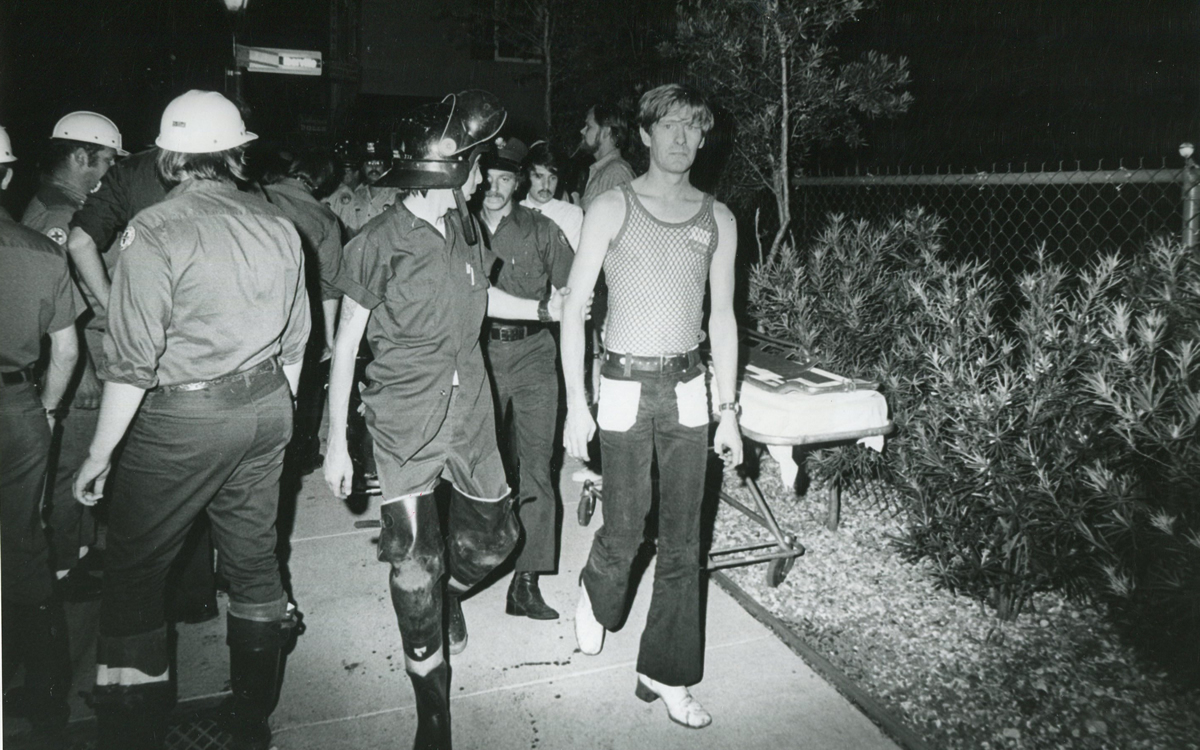
On June 23 of last year, I held the microphone as a gay man in the New Orleans City Council Chamber and related a lost piece of queer history to the seven council members. I told this story to disabuse all New Orleanians of the notion that silence and accommodation, in the face of institutional and official failures, are a path to healing.
The story I related to them began on a typical Sunday night at a second-story bar on the fringe of New Orleans’ French Quarter in 1973, where working-class men would gather around a white baby grand piano and belt out the lyrics to a song that was the anthem of their hidden community, “United We Stand” by the Brotherhood of Man.
“United we stand,” the men would sing together, “divided we fall” — the words epitomizing the ethos of their beloved UpStairs Lounge bar, an egalitarian free space that served as a forerunner to today’s queer safe havens.
Around that piano in the 1970s Deep South, gays and lesbians, white and Black queens, Christians and non-Christians, and even early gender minorities could cast aside the racism, sexism, and homophobia of the times to find acceptance and companionship for a moment.
For regulars, the UpStairs Lounge was a miracle, a small pocket of acceptance in a broader world where their very identities were illegal.
On the Sunday night of June 24, 1973, their voices were silenced in a murderous act of arson that claimed 32 lives and still stands as the deadliest fire in New Orleans history — and the worst mass killing of gays in 20th century America.
As 13 fire companies struggled to douse the inferno, police refused to question the chief suspect, even though gay witnesses identified and brought the soot-covered man to officers idly standing by. This suspect, an internally conflicted gay-for-pay sex worker named Rodger Dale Nunez, had been ejected from the UpStairs Lounge screaming the word “burn” minutes before, but New Orleans police rebuffed the testimony of fire survivors on the street and allowed Nunez to disappear.
As the fire raged, police denigrated the deceased to reporters on the street: “Some thieves hung out there, and you know this was a queer bar.”
For days afterward, the carnage met with official silence. With no local gay political leaders willing to step forward, national Gay Liberation-era figures like Rev. Troy Perry of the Metropolitan Community Church flew in to “help our bereaved brothers and sisters” — and shatter officialdom’s code of silence.
Perry broke local taboos by holding a press conference as an openly gay man. “It’s high time that you people, in New Orleans, Louisiana, got the message and joined the rest of the Union,” Perry said.
Two days later, on June 26, 1973, as families hesitated to step forward to identify their kin in the morgue, UpStairs Lounge owner Phil Esteve stood in his badly charred bar, the air still foul with death. He rebuffed attempts by Perry to turn the fire into a call for visibility and progress for homosexuals.
“This fire had very little to do with the gay movement or with anything gay,” Esteve told a reporter from The Philadelphia Inquirer. “I do not want my bar or this tragedy to be used to further any of their causes.”
Conspicuously, no photos of Esteve appeared in coverage of the UpStairs Lounge fire or its aftermath — and the bar owner also remained silent as he witnessed police looting the ashes of his business.
“Phil said the cash register, juke box, cigarette machine and some wallets had money removed,” recounted Esteve’s friend Bob McAnear, a former U.S. Customs officer. “Phil wouldn’t report it because, if he did, police would never allow him to operate a bar in New Orleans again.”
The next day, gay bar owners, incensed at declining gay bar traffic amid an atmosphere of anxiety, confronted Perry at a clandestine meeting. “How dare you hold your damn news conferences!” one business owner shouted.
Ignoring calls for gay self-censorship, Perry held a 250-person memorial for the fire victims the following Sunday, July 1, culminating in mourners defiantly marching out the front door of a French Quarter church into waiting news cameras. “Reverend Troy Perry awoke several sleeping giants, me being one of them,” recalled Charlene Schneider, a lesbian activist who walked out of that front door with Perry.
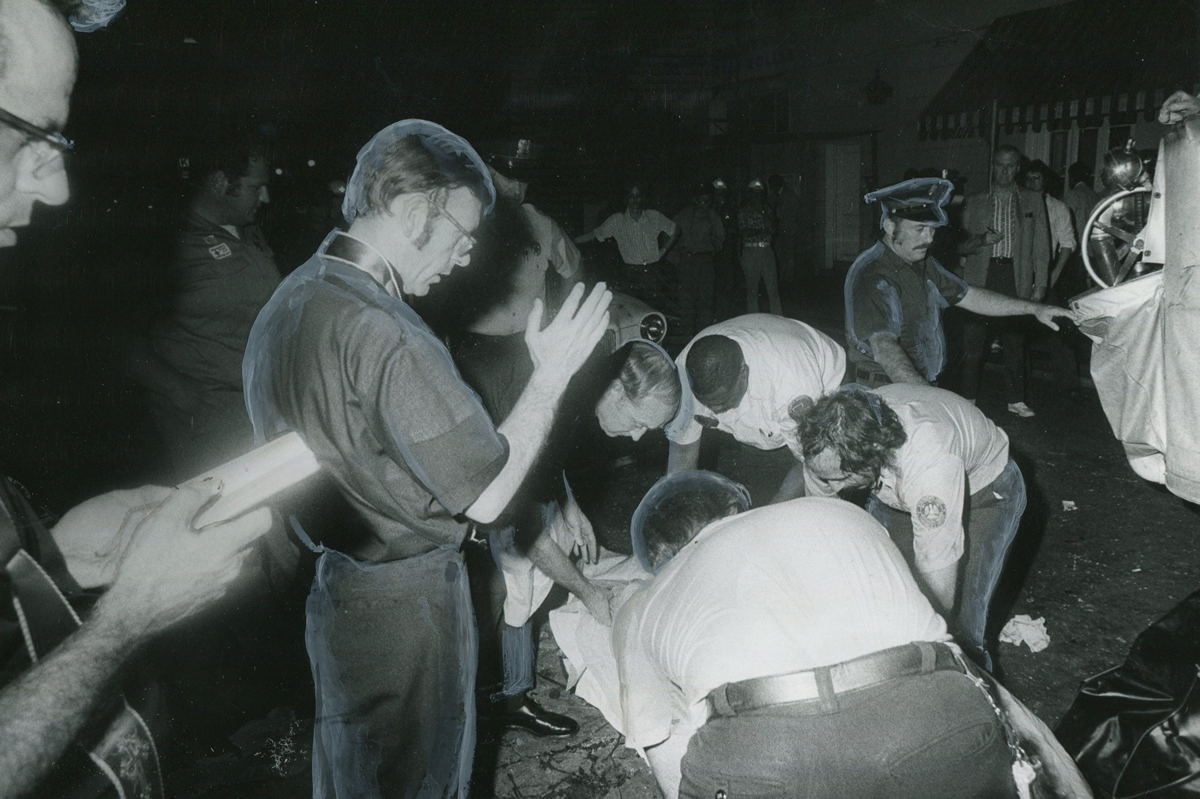
Esteve doubted the UpStairs Lounge story’s capacity to rouse gay political fervor. As the coroner buried four of his former patrons anonymously on the edge of town, Esteve quietly collected at least $25,000 in fire insurance proceeds. Less than a year later, he used the money to open another gay bar called the Post Office, where patrons of the UpStairs Lounge — some with visible burn scars — gathered but were discouraged from singing “United We Stand.”
New Orleans cops neglected to question the chief arson suspect and closed the investigation without answers in late August 1973. Gay elites in the city’s power structure began gaslighting the mourners who marched with Perry into the news cameras, casting suspicion on their memories and re-characterizing their moment of liberation as a stunt.
When a local gay journalist asked in April 1977, “Where are the gay activists in New Orleans?,” Esteve responded that there were none, because none were needed. “We don’t feel we’re discriminated against,” Esteve said. “New Orleans gays are different from gays anywhere else… Perhaps there is some correlation between the amount of gay activism in other cities and the degree of police harassment.”
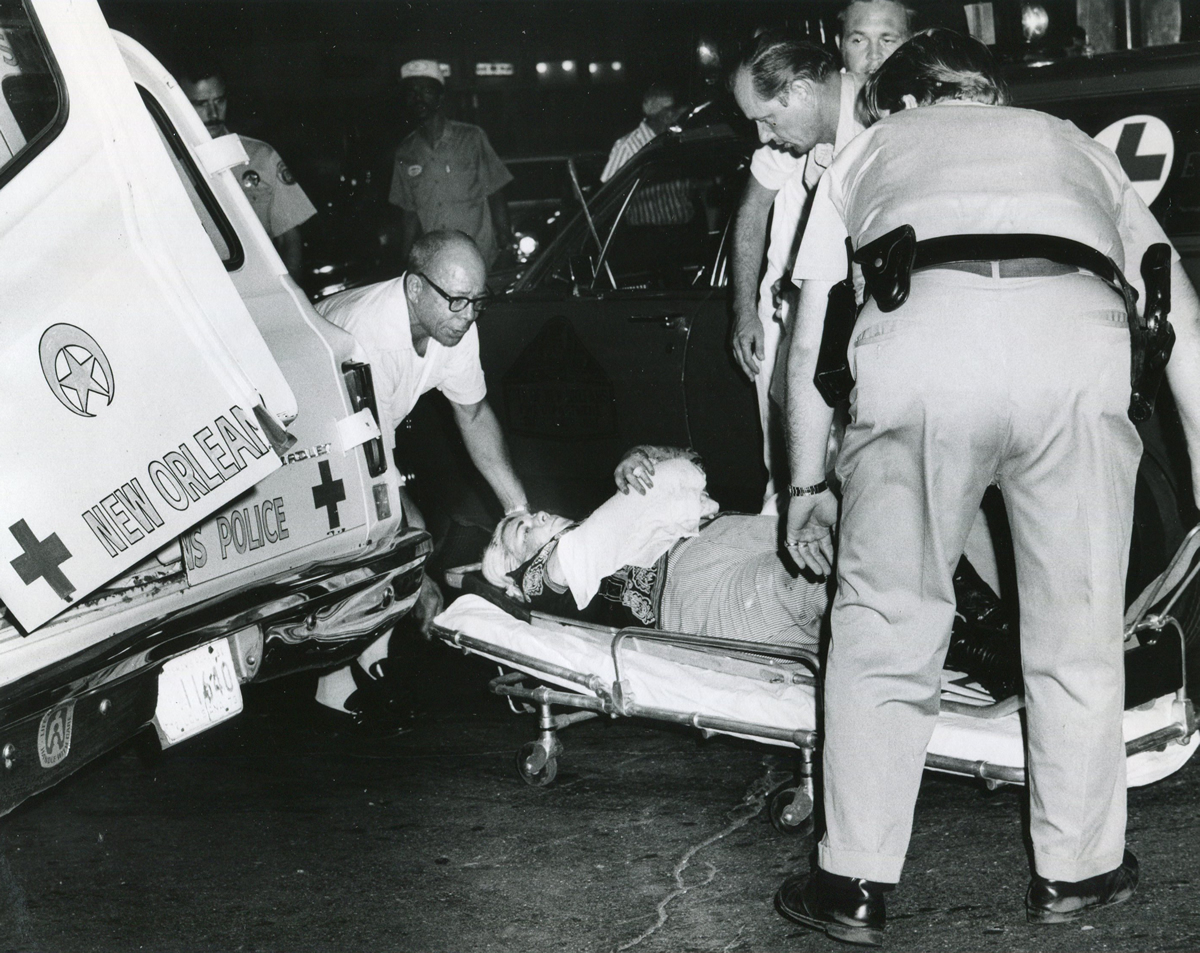
An attitude of nihilism and disavowal descended upon the memory of the UpStairs Lounge victims, goaded by Esteve and fellow gay entrepreneurs who earned their keep via gay patrons drowning their sorrows each night instead of protesting the injustices that kept them drinking.
Into the 1980s, the story of the UpStairs Lounge all but vanished from conversation — with the exception of a few sanctuaries for gay political debate such as the local lesbian bar Charlene’s, run by the activist Charlene Schneider.
By 1988, the 15th anniversary of the fire, the UpStairs Lounge narrative comprised little more than a call for better fire codes and indoor sprinklers. UpStairs Lounge survivor Stewart Butler summed it up: “A tragedy that, as far as I know, no good came of.”
Finally, in 1991, at Stewart Butler and Charlene Schneider’s nudging, the UpStairs Lounge story became aligned with the crusade of liberated gays and lesbians seeking equal rights in Louisiana. The halls of power responded with intermittent progress. The New Orleans City Council, horrified by the story but not yet ready to take its look in the mirror, enacted an anti-discrimination ordinance protecting gays and lesbians in housing, employment, and public accommodations that Dec. 12 — more than 18 years after the fire.
“I believe the fire was the catalyst for the anger to bring us all to the table,” Schneider told The Times-Picayune, a tacit rebuke to Esteve’s strategy of silent accommodation. Even Esteve seemed to change his stance with time, granting a full interview with the first UpStairs Lounge scholar Johnny Townsend sometime around 1989.
Most of the figures in this historic tale are now deceased. What’s left is an enduring story that refused to go gently. The story now echoes around the world — a musical about the UpStairs Lounge fire recently played in Tokyo, translating the gay underworld of the 1973 French Quarter for Japanese audiences.
When I finished my presentation to the City Council last June, I looked up to see the seven council members in tears. Unanimously, they approved a resolution acknowledging the historic failures of city leaders in the wake of the UpStairs Lounge fire.
Council members personally apologized to UpStairs Lounge families and survivors seated in the chamber in a symbolic act that, though it could not bring back those who died, still mattered greatly to those whose pain had been denied, leaving them to grieve alone. At long last, official silence and indifference gave way to heartfelt words of healing.
The way Americans remember the past is an active, ongoing process. Our collective memory is malleable, but it matters because it speaks volumes about our maturity as a people, how we acknowledge the past’s influence in our lives, and how it shapes the examples we set for our youth. Do we grapple with difficult truths, or do we duck accountability by defaulting to nostalgia and bluster? Or worse, do we simply ignore the past until it fades into a black hole of ignorance and indifference?
I believe that a factual retelling of the UpStairs Lounge tragedy — and how, 50 years onward, it became known internationally — resonates beyond our current divides. It reminds queer and non-queer Americans that ignoring the past holds back the present, and that silence is no cure for what ails a participatory nation.
Silence isolates. Silence gaslights and shrouds. It preserves the power structures that scapegoat the disempowered.
Solidarity, on the other hand, unites. Solidarity illuminates a path forward together. Above all, solidarity transforms the downtrodden into a resounding chorus of citizens — in the spirit of voices who once gathered ‘round a white baby grand piano and sang, joyfully and loudly, “United We Stand.”
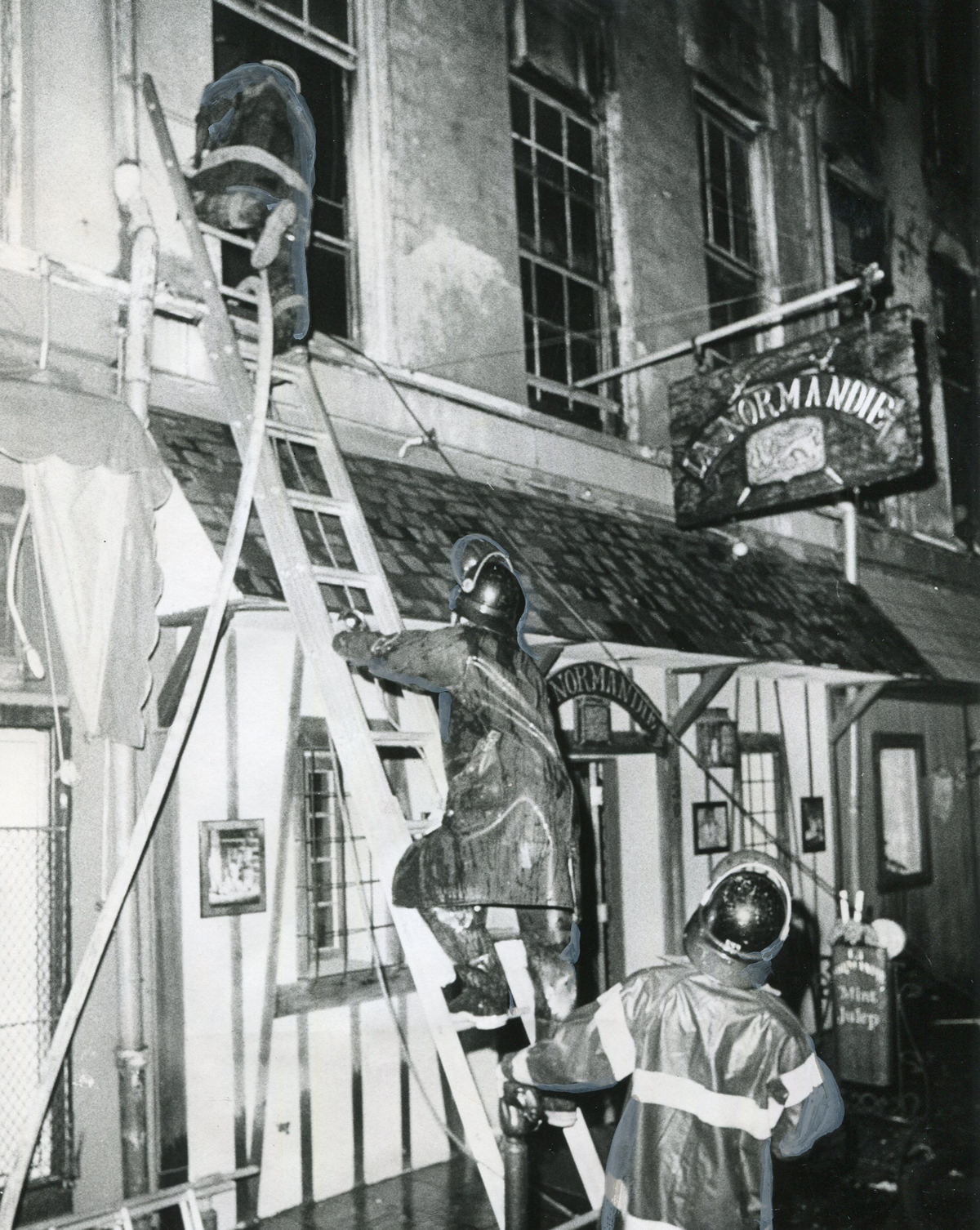
Robert W. Fieseler is a New Orleans-based journalist and the author of “Tinderbox: the Untold Story of the Up Stairs Lounge Fire and the Rise of Gay Liberation.”
homepage news
New Supreme Court term includes critical LGBTQ case with ‘terrifying’ consequences
Business owner seeks to decline services for same-sex weddings
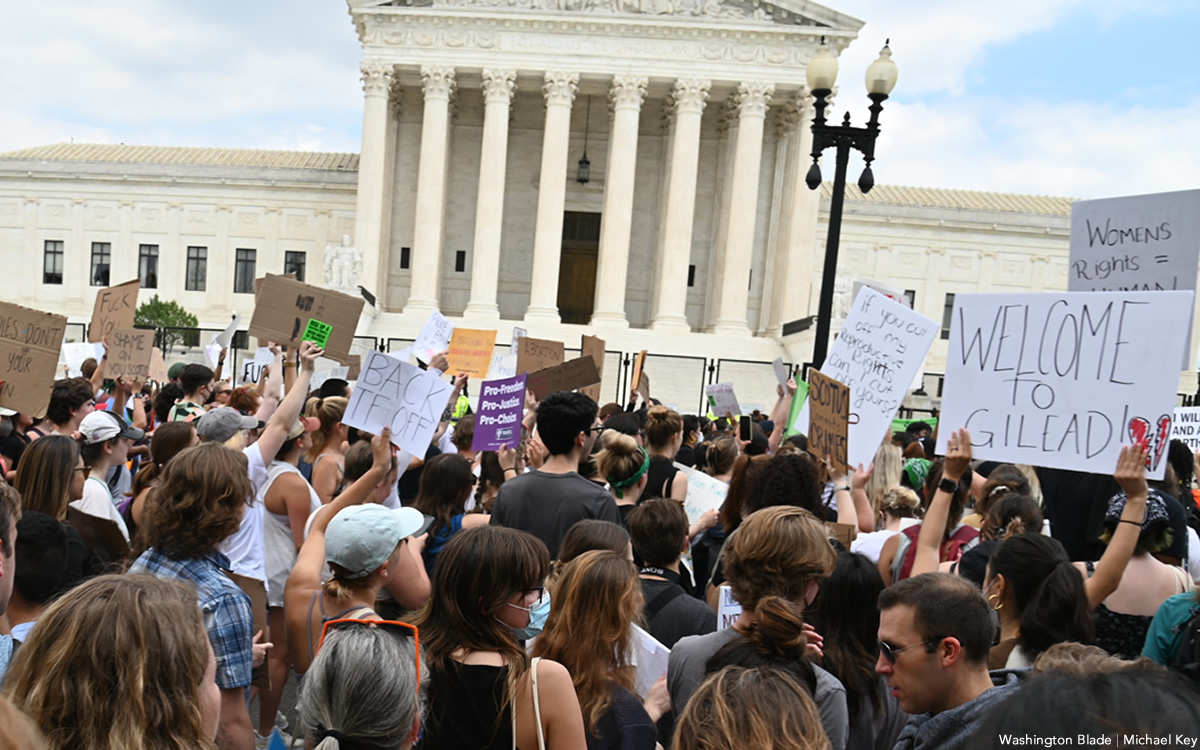
The U.S. Supreme Court, after a decision overturning Roe v. Wade that still leaves many reeling, is starting a new term with justices slated to revisit the issue of LGBTQ rights.
In 303 Creative v. Elenis, the court will return to the issue of whether or not providers of custom-made goods can refuse service to LGBTQ customers on First Amendment grounds. In this case, the business owner is Lorie Smith, a website designer in Colorado who wants to opt out of providing her graphic design services for same-sex weddings despite the civil rights law in her state.
Jennifer Pizer, acting chief legal officer of Lambda Legal, said in an interview with the Blade, “it’s not too much to say an immeasurably huge amount is at stake” for LGBTQ people depending on the outcome of the case.
“This contrived idea that making custom goods, or offering a custom service, somehow tacitly conveys an endorsement of the person — if that were to be accepted, that would be a profound change in the law,” Pizer said. “And the stakes are very high because there are no practical, obvious, principled ways to limit that kind of an exception, and if the law isn’t clear in this regard, then the people who are at risk of experiencing discrimination have no security, no effective protection by having a non-discrimination laws, because at any moment, as one makes their way through the commercial marketplace, you don’t know whether a particular business person is going to refuse to serve you.”
The upcoming arguments and decision in the 303 Creative case mark a return to LGBTQ rights for the Supreme Court, which had no lawsuit to directly address the issue in its previous term, although many argued the Dobbs decision put LGBTQ rights in peril and threatened access to abortion for LGBTQ people.
And yet, the 303 Creative case is similar to other cases the Supreme Court has previously heard on the providers of services seeking the right to deny services based on First Amendment grounds, such as Masterpiece Cakeshop and Fulton v. City of Philadelphia. In both of those cases, however, the court issued narrow rulings on the facts of litigation, declining to issue sweeping rulings either upholding non-discrimination principles or First Amendment exemptions.
Pizer, who signed one of the friend-of-the-court briefs in opposition to 303 Creative, said the case is “similar in the goals” of the Masterpiece Cakeshop litigation on the basis they both seek exemptions to the same non-discrimination law that governs their business, the Colorado Anti-Discrimination Act, or CADA, and seek “to further the social and political argument that they should be free to refuse same-sex couples or LGBTQ people in particular.”
“So there’s the legal goal, and it connects to the social and political goals and in that sense, it’s the same as Masterpiece,” Pizer said. “And so there are multiple problems with it again, as a legal matter, but also as a social matter, because as with the religion argument, it flows from the idea that having something to do with us is endorsing us.”
One difference: the Masterpiece Cakeshop litigation stemmed from an act of refusal of service after owner, Jack Phillips, declined to make a custom-made wedding cake for a same-sex couple for their upcoming wedding. No act of discrimination in the past, however, is present in the 303 Creative case. The owner seeks to put on her website a disclaimer she won’t provide services for same-sex weddings, signaling an intent to discriminate against same-sex couples rather than having done so.
As such, expect issues of standing — whether or not either party is personally aggrieved and able bring to a lawsuit — to be hashed out in arguments as well as whether the litigation is ripe for review as justices consider the case. It’s not hard to see U.S. Chief Justice John Roberts, who has sought to lead the court to reach less sweeping decisions (sometimes successfully, and sometimes in the Dobbs case not successfully) to push for a decision along these lines.
Another key difference: The 303 Creative case hinges on the argument of freedom of speech as opposed to the two-fold argument of freedom of speech and freedom of religious exercise in the Masterpiece Cakeshop litigation. Although 303 Creative requested in its petition to the Supreme Court review of both issues of speech and religion, justices elected only to take up the issue of free speech in granting a writ of certiorari (or agreement to take up a case). Justices also declined to accept another question in the petition request of review of the 1990 precedent in Smith v. Employment Division, which concluded states can enforce neutral generally applicable laws on citizens with religious objections without violating the First Amendment.
Representing 303 Creative in the lawsuit is Alliance Defending Freedom, a law firm that has sought to undermine civil rights laws for LGBTQ people with litigation seeking exemptions based on the First Amendment, such as the Masterpiece Cakeshop case.
Kristen Waggoner, president of Alliance Defending Freedom, wrote in a Sept. 12 legal brief signed by her and other attorneys that a decision in favor of 303 Creative boils down to a clear-cut violation of the First Amendment.
“Colorado and the United States still contend that CADA only regulates sales transactions,” the brief says. “But their cases do not apply because they involve non-expressive activities: selling BBQ, firing employees, restricting school attendance, limiting club memberships, and providing room access. Colorado’s own cases agree that the government may not use public-accommodation laws to affect a commercial actor’s speech.”
Pizer, however, pushed back strongly on the idea a decision in favor of 303 Creative would be as focused as Alliance Defending Freedom purports it would be, arguing it could open the door to widespread discrimination against LGBTQ people.
“One way to put it is art tends to be in the eye of the beholder,” Pizer said. “Is something of a craft, or is it art? I feel like I’m channeling Lily Tomlin. Remember ‘soup and art’? We have had an understanding that whether something is beautiful or not is not the determining factor about whether something is protected as artistic expression. There’s a legal test that recognizes if this is speech, whose speech is it, whose message is it? Would anyone who was hearing the speech or seeing the message understand it to be the message of the customer or of the merchants or craftsmen or business person?”
Despite the implications in the case for LGBTQ rights, 303 Creative may have supporters among LGBTQ people who consider themselves proponents of free speech.
One joint friend-of-the-court brief before the Supreme Court, written by Dale Carpenter, a law professor at Southern Methodist University who’s written in favor of LGBTQ rights, and Eugene Volokh, a First Amendment legal scholar at the University of California, Los Angeles, argues the case is an opportunity to affirm the First Amendment applies to goods and services that are uniquely expressive.
“Distinguishing expressive from non-expressive products in some contexts might be hard, but the Tenth Circuit agreed that Smith’s product does not present a hard case,” the brief says. “Yet that court (and Colorado) declined to recognize any exemption for products constituting speech. The Tenth Circuit has effectively recognized a state interest in subjecting the creation of speech itself to antidiscrimination laws.”
Oral arguments in the case aren’t yet set, but may be announced soon. Set to defend the state of Colorado and enforcement of its non-discrimination law in the case is Colorado Solicitor General Eric Reuel Olson. Just this week, the U.S. Supreme Court announced it would grant the request to the U.S. solicitor general to present arguments before the justices on behalf of the Biden administration.
With a 6-3 conservative majority on the court that has recently scrapped the super-precedent guaranteeing the right to abortion, supporters of LGBTQ rights may think the outcome of the case is all but lost, especially amid widespread fears same-sex marriage would be next on the chopping block. After the U.S. Tenth Circuit Court of Appeals ruled against 303 Creative in the lawsuit, the simple action by the Supreme Court to grant review in the lawsuit suggests they are primed to issue a reversal and rule in favor of the company.
Pizer, acknowledging the call to action issued by LGBTQ groups in the aftermath of the Dobbs decision, conceded the current Supreme Court issuing the ruling in this case is “a terrifying prospect,” but cautioned the issue isn’t so much the makeup of the court but whether or not justices will continue down the path of abolishing case law.
“I think the question that we’re facing with respect to all of the cases or at least many of the cases that are in front of the court right now, is whether this court is going to continue on this radical sort of wrecking ball to the edifice of settled law and seemingly a goal of setting up whole new structures of what our basic legal principles are going to be. Are we going to have another term of that?” Pizer said. “And if so, that’s terrifying.”
homepage news
Kelley Robinson, a Black, queer woman, named president of Human Rights Campaign
Progressive activist a veteran of Planned Parenthood Action Fund
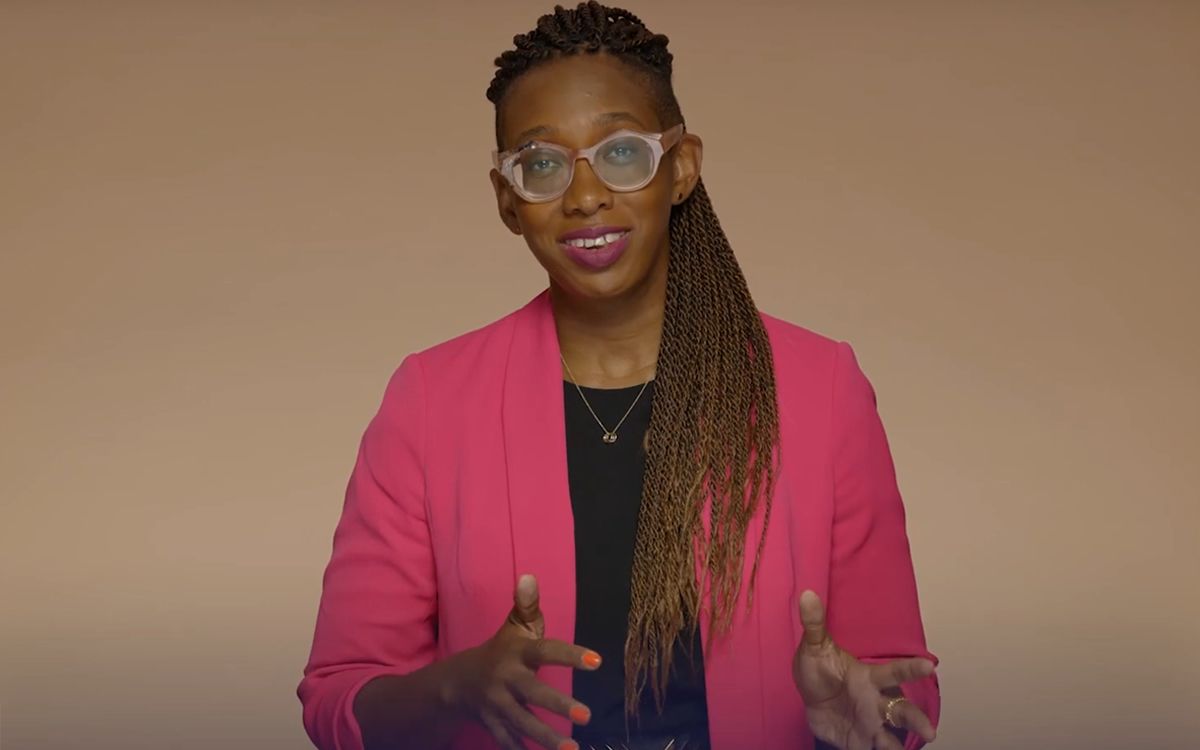
Kelley Robinson, a Black, queer woman and veteran of Planned Parenthood Action Fund, is to become the next president of the Human Rights Campaign, the nation’s leading LGBTQ group announced on Tuesday.
Robinson is set to become the ninth president of the Human Rights Campaign after having served as executive director of Planned Parenthood Action Fund and more than 12 years of experience as a leader in the progressive movement. She’ll be the first Black, queer woman to serve in that role.
“I’m honored and ready to lead HRC — and our more than three million member-advocates — as we continue working to achieve equality and liberation for all Lesbian, Gay, Bisexual, Transgender, and Queer people,” Robinson said. “This is a pivotal moment in our movement for equality for LGBTQ+ people. We, particularly our trans and BIPOC communities, are quite literally in the fight for our lives and facing unprecedented threats that seek to destroy us.”
The next Human Rights Campaign president is named as Democrats are performing well in polls in the mid-term elections after the U.S. Supreme Court overturned Roe v. Wade, leaving an opening for the LGBTQ group to play a key role amid fears LGBTQ rights are next on the chopping block.
“The overturning of Roe v. Wade reminds us we are just one Supreme Court decision away from losing fundamental freedoms including the freedom to marry, voting rights, and privacy,” Robinson said. “We are facing a generational opportunity to rise to these challenges and create real, sustainable change. I believe that working together this change is possible right now. This next chapter of the Human Rights Campaign is about getting to freedom and liberation without any exceptions — and today I am making a promise and commitment to carry this work forward.”
The Human Rights Campaign announces its next president after a nearly year-long search process after the board of directors terminated its former president Alphonso David when he was ensnared in the sexual misconduct scandal that led former New York Gov. Andrew Cuomo to resign. David has denied wrongdoing and filed a lawsuit against the LGBTQ group alleging racial discrimination.
